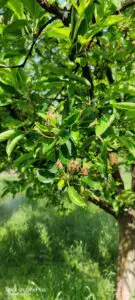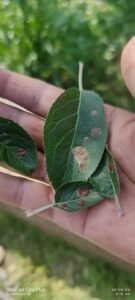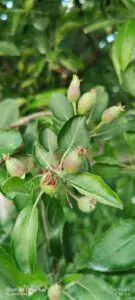Introduction
Growing a productive apple tree requires a good comprehension of several cultivation practices, and pruning ranks high on the list. Notably, the process isn’t confined to the colder months alone; summer pruning is crucial for managing the tree’s growth, maintaining its health, and improving its fruit yield. This blog post explores the practice of summer pruning in apple trees, covering its importance, benefits, and a step-by-step guide on how it should be done.
The Importance of Summer Pruning
Unlike winter pruning, which is focused on encouraging the tree to form new branches, summer pruning is about controlling the tree’s growth. It prioritizes light and air circulation to different parts of the tree, consequently reducing the risk of fungal diseases that thrive in moist and dark conditions. Moreover, it helps direct the tree’s energy toward fruit production rather than excessive foliage growth.
Benefits of Summer Pruning
- Increased Fruit Size and Quality: By removing excess and unnecessary foliage, more nutrients and resources are directed towards the development of fruit, enhancing its size and quality.
- Improved Air Circulation and Sunlight Penetration: Pruning helps open up the tree’s canopy, aiding in better light penetration and air circulation, thus reducing the risk for diseases.
- Controlled Growth: It allows growers to manage the shape and size of the tree, aiding in efficient space utilization, especially in smaller gardens or enclosures.
The Step-by-Step Guide to Summer Pruning
- Suitable Timing: The best time to perform summer pruning on apple trees is usually between late July and August when the tree’s rapid spring growth has subsided, but there’s still enough time for the tree to heal before winter.
- Tools: Sharpened pruning shears and loppers are ideal tools for this process. Ensure your tools are clean and disinfected to prevent the spread of diseases.
- Assess Your Apple Tree: Before you start pruning, study the tree’s structure to determine which branches need pruning.
- Start Pruning: Begin by removing any dead, diseased or damaged branches. This is followed by cutting off any branches that are growing inwards or crowding the tree, as well as those that are much large than others disrupting the tree balance.
- Prune for Light and Air: When pruning, aim to create a canopy that allows for adequate sunlight penetration and air circulation. A rule of thumb is to prune such that a bird could fly directly through your tree without confronting obstacles.
- Sealing and After Care: After pruning, it’s necessary to apply a special sealer or paint to the cut ends of large branches. Monitor the tree’s health after pruning to ensure its well-being.
Conclusion
Pruning is both a science and an art, requiring knowledge, timing, and the right technique. With supervised practice and experience, summer pruning will become an integral part of your apple tree’s productive journey. It is through such commitment and care that the apple tree rewards us with its bountiful harvest.
Remember, each tree is unique and may require slightly different care. Reach out to local extension services or master gardeners in your community for tailored advice on managing your apple trees. The fruits of your labor will definitely be worth the effort!



